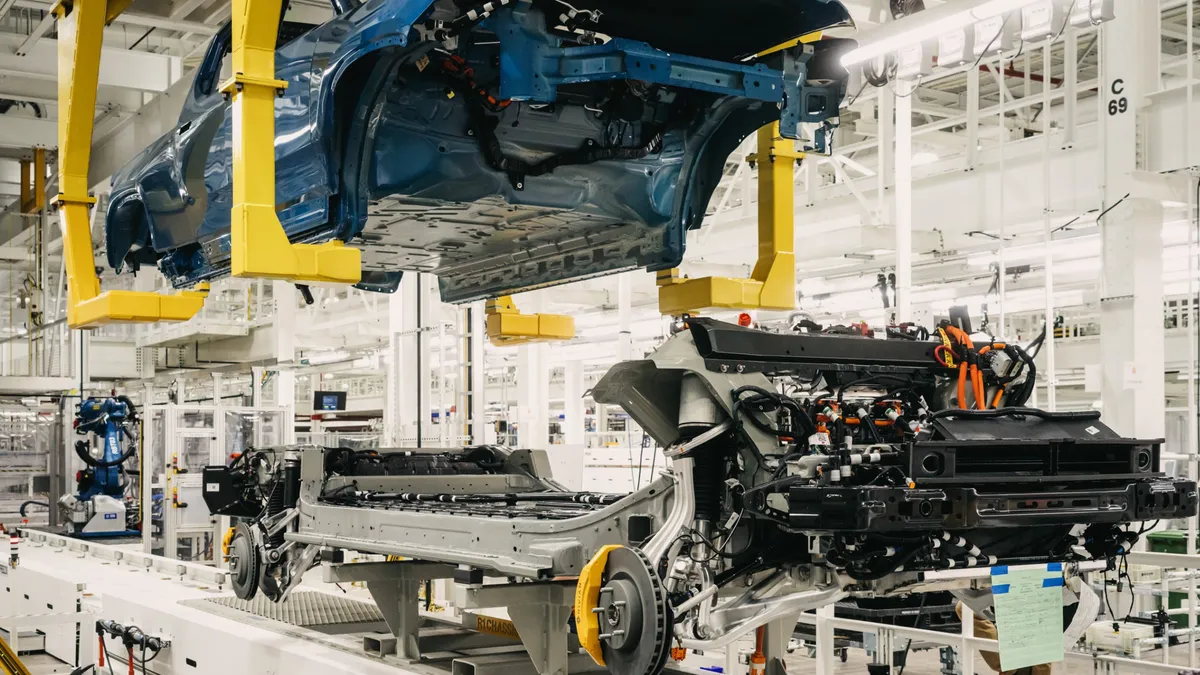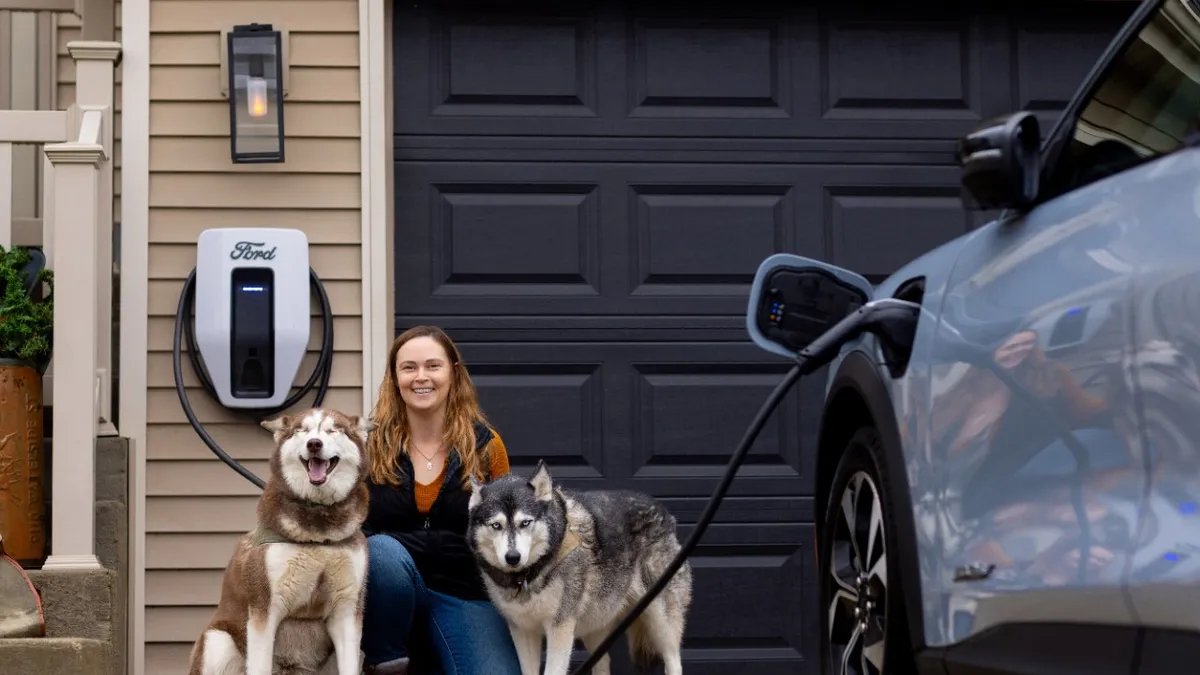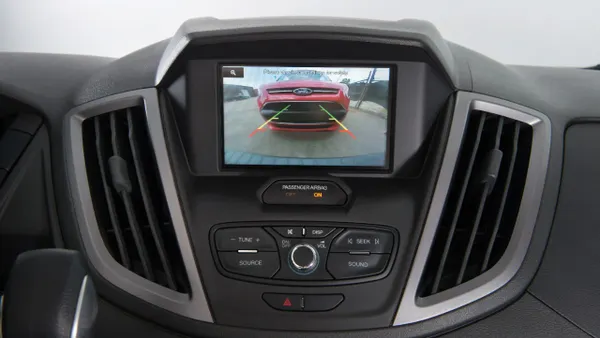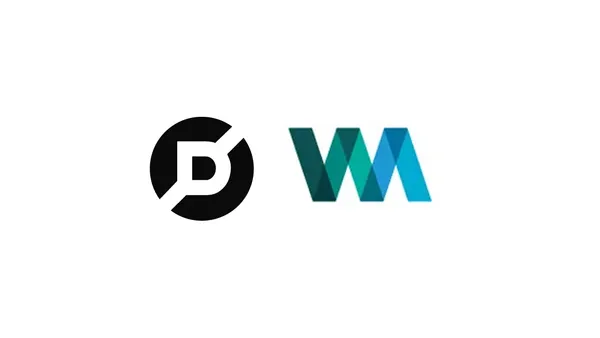Ford Motor Co. on Wednesday reported a net loss of $36 million in the second quarter, citing costs associated with a field service action and the cancellation of a battery-electric vehicle program. Its adjusted earnings before interest and taxes were $2.1 billion, which Ford said included $800 million in tariff costs.
The hit from tariffs significantly helped wipe out the automaker's net profit, marking its first quarterly loss since 2023.
Nevertheless, Ford saw strong sales in the quarter: 612,095 vehicles in the U.S., or a 14.2% increase from a year ago. Its electrified-vehicle (including BEVs, plug-in-electric vehicles and hybrids) sales totaled 82,886 during the quarter, up 6.6% from Q2 2024.
For Q2 2025, Ford reported revenue of $50.2 billion versus $44.14 billion estimated per Bloomberg consensus, up 5% compared to a year ago.
Ford posted adjusted earnings per share of $0.37 versus $0.33 expected, on adjusted EBIT (earnings before interest and taxes) of $2.1 billion vs $1.91 billion estimated.
The Blue Oval automaker’s estimate for tariff costs for the year rose $500 million to $3 billion, up from $2.5 billion predicted last spring.
The automaker said it now plans to record full year adjusted earnings before interest and taxes of $6.5 billion to $7.5 billion, down from its February 2025 projection of between $7 billion and $8.5 billion.
Ford’s domestic production accounts for about 80% of the vehicles it sells in the U.S., according to GlobalData. Ford’s tariff losses are less than those for other Detroit-based OEMs General Motors and Stellantis, but it must still deal with steep levies on aluminum, steel and copper.
CEO Jim Farley says the company is targeting a $1 billion improvement in material costs as a partial offset to tariff expenses.
As problematic as tariffs are, additional offsets coming from Trump administration deregulation moves, such as a rollback of emissions standards, which will result in Ford being able to increase sales of its most profitable internal-combustion-engine-powered trucks and SUVs.
Commercial unit and ICE business shine, Model e struggles
The Ford Pro commercial-vehicle business continues to be a growth area for the automaker, generating $2.3 billion in EBIT with a margin of 12.3% on $18.8 billion in revenue. Ford Pro’s paid subscriptions grew 24% year-over-year to 757,000. “Ford Pro is a unique competitive advantage driving both top- and bottom-line growth while creating new high-margin revenue streams from software and physical services,” says Farley.
Revenues for the Ford Model e business unit, which includes battery-electric vehicles and software, climbed 105% to $2.4 billion, but it is still losing money to the tune of $1.329 billion. The automaker said it expects to lose up to $5.5 billion on its BEV and software business in 2025.
Meanwhile, Ford Blue, which represents the automaker’s traditional ICE vehicles, reported $661 million in EBIT.
Tariff talk
Farley tells Bloomberg the Trump administration's reduced tariffs on Japan would give its Asian rivals a "meaningful" cost advantage. Last week, President Trump said the U.S. would lower tariffs on Japan to 15% from 25%. The reduced tariffs, lower labor costs and favorable exchange rates "really advantage their export (business)," Farley said.
A Kentucky-built Ford Escape could cost $5,000 more than a Japan-made Toyota RAV4, while a Michigan-made Ford Bronco might be undercut by a Toyota 4Runner to the tune of $10,000, Farley added.
Ford's finance chief Sherry House said in a post-earnings call with analysts and media the firm had raised its forecast for the cost of tariffs on its business because levies on Mexico and Canada, where it has facilities, have remained higher for longer than expected.
“A Model T moment”
Even with a sunset of the $7,500 federal tax credit supporting the purchase of BEVs coming on Sept. 30, Farley teased on the earnings call a mid-August showcase of the company’s BEV manufacturing complex in Kentucky. He says the combination of a low-cost, simpler BEV architecture combined with new, lower-cost manufacturing processes it will lay out is a “Model T moment” – referring to the landmark transformation in lower-cost.












